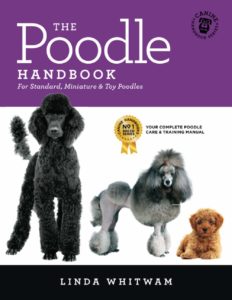Things you need to know about a poodle’s health
Poodle Ear Care
Ears should always be pink and clean, without any unpleasant odor. Use a cotton wool bud dipped in almond or olive oil to clean inside the ear, but on no account probe deep into the ear recess.
If this recess looks dirty and has an unpleasant odor, a visit to a veterinarian is necessary. Hair should be plucked from ears between finger and thumb about every six weeks.
Neglected ears become inflamed and the lining painful and thickened. Surgery may then be the only treatment. Sometimes a poodle may really resent the plucking, in which case be extra vigilant in your checks for smell and discharge.
Poodle frequently has runny eyes, most obviously seen in Whites and Apricots but, often present in all varieties. This problem can be difficult and frustrating for even a veterinarian to sort out, but regular cleaning with proprietary preparations will improve the eyes’ appearance and reduce local skin problems.
If the eyes are inflamed or discharging pus, look for foreign bodies such as grass seeds, then bath with cotton wool and cool water. If the Poodle appears to be in pain from the examination or bathing, seek immediate veterinary attention.
The Anal Glands
These are located each side of the anus and should be regularly checked as, unless kept clear, they can become blocked often causing an abscess to form.
If you see any signs of your Poodle pulling itself along the ground while sitting down, or running around after its tail, it s wise to examine these glands. Mild cases are quite easy, if somewhat unpleasant, to deal with.
As these glands are situated close to the anal passage, with pressure from your thumb and finger exerted each side of the anus, they will quickly empty. It is a good idea to ask your veterinarian or the breeder to show you this method, which will enable you to prevent any further in the future
Books.
The Poodle Handbook: The Essential Guide to Standard, Miniature & Toy Poodles (Canine Handbooks)
